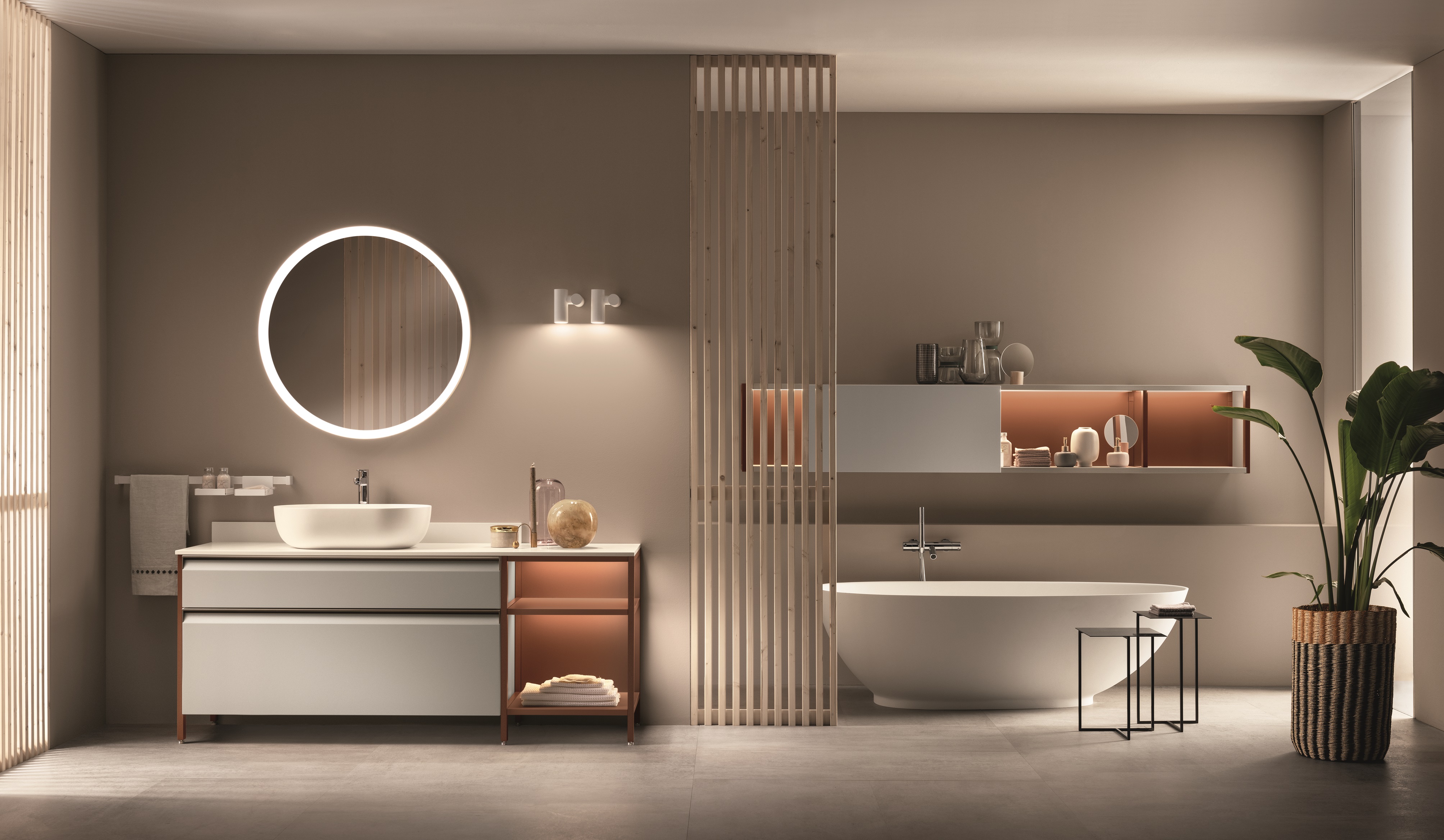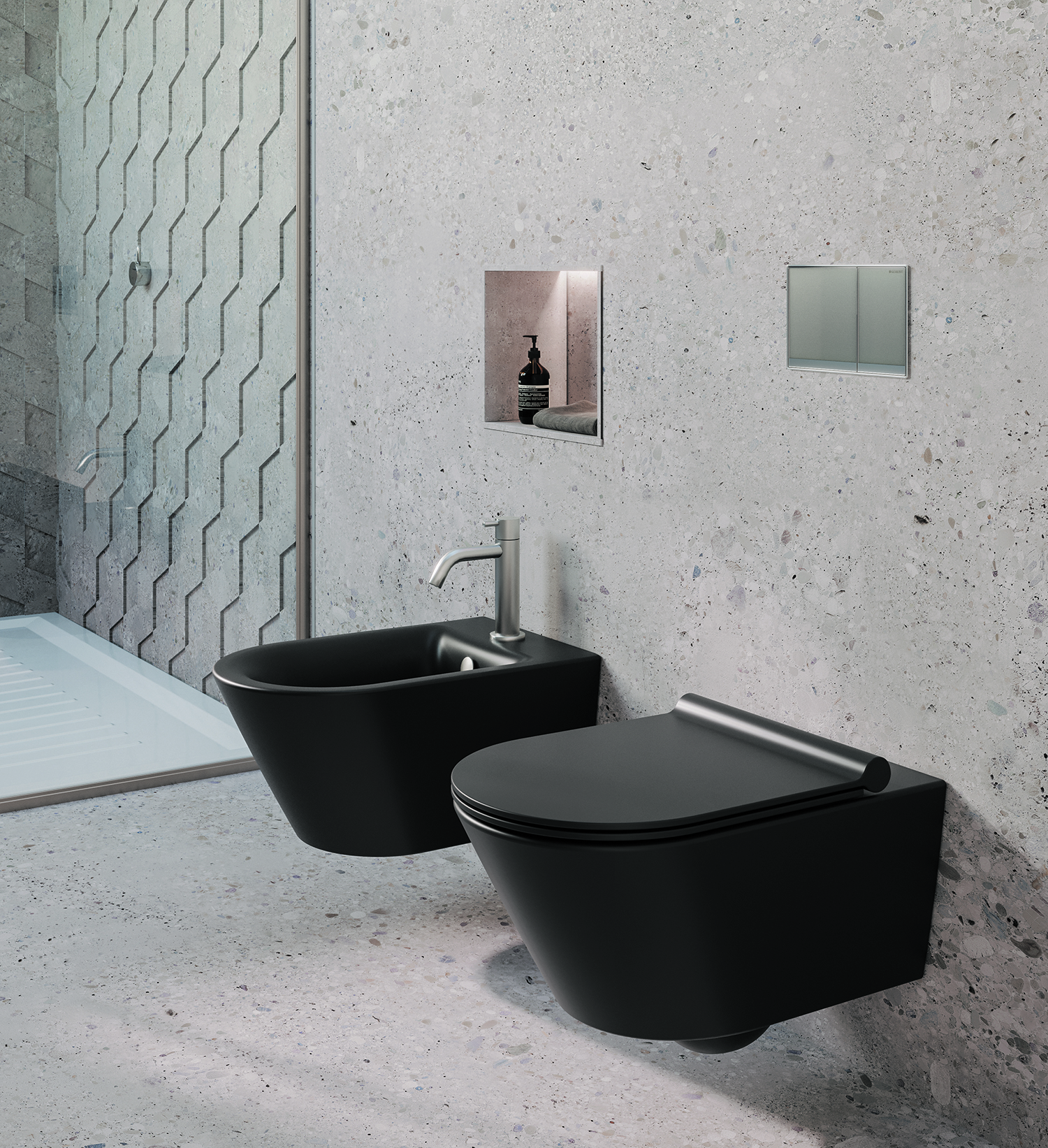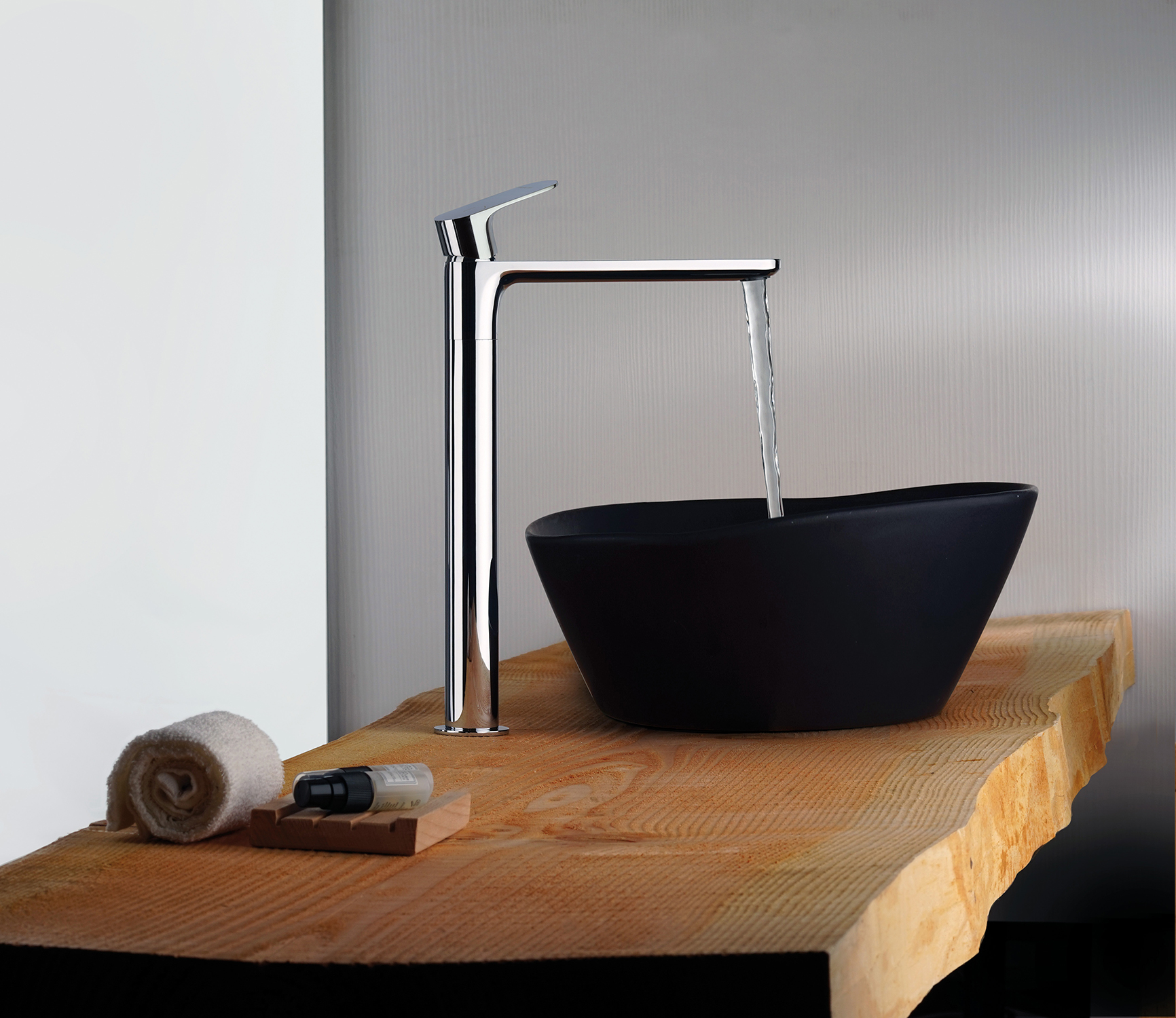Eco bathroom designs, ideas and features - how to make a splash while staying green
Eco bathrooms are a rising design trend, and experts explain how to create one while losing nothing on style


The quest to create eco bathrooms is becoming ever more popular, as we are all becoming increasingly aware of our impact on the planet. and looking at ways to incorporate eco-friendly and sustainable elements into our homes. Bathrooms are often viewed as the room that uses the most resources so it’s an area we can all make sustainable changes. The most important of these is water saving and efficiency. Figures suggest a single home accounts for 11,000 gallons of water waste per year.
The trouble with all bathroom ideas - they are going to include baths and showers, which are accountable for around 34% of daily household water use. That’s a lot of water, so what can we do to reduce it?
As with all things to do with sustainable living, there is conflicting advice - is having a bath good or bad? Are showers the way to go? We have done our best to navigate through it to give you an informed overall view.
If you are planning a new bathroom, then consider the room as a whole. Look for energy and water-saving products, and good quality furniture that has been made with sustainable materials and will stand the test of time. The cost of installation is the same in either case, but cheap fittings don’t last as long, which means you pay more in the long run and the environmental cost is higher too.
By introducing sustainable products into your bathroom you will reduce energy and water consumption. ‘Manufacturers are working hard to develop more environmentally friendly products and are also mindful of embracing more eco-friendly production and packing methods,' says Louise Ashdown, Head of Design at West One Bathrooms. 'A good example is Roman Showers, who recently received accreditation from The Carbon Trust as being Carbon Neutral. Every piece of their aluminum is already recycled before it is used and packaging is manufactured from already recycled cardboard.’
Eco bathrooms - everything you need to know

Is it eco-friendly to have a bath?

People still love a bath for relaxation and wellbeing, for bathing young children or as a statement feature in the bathroom. It is often said that a shower is more water efficient than a bath, and having one is one of the easier ways to save energy, but this is not necessarily the case.
‘Many power showers have high flow rates, and even an eight-minute shower will use more water than an average bath,' says Emma Joyce of Victoria + Albert Baths. '100 litres is typical for a 1700mm bath – some power showers use more than 15 litres every minute.’ Choosing a bath with a smaller capacity will naturally use less water. V+A’s Napoli bath, above, holds the lowest volume of water.
The Livingetc newsletters are your inside source for what’s shaping interiors now - and what’s next. Discover trend forecasts, smart style ideas, and curated shopping inspiration that brings design to life. Subscribe today and stay ahead of the curve.
A quick hack to making your bath more eco friendly comes from going slightly bespoke. ‘Buy a bath where the overflow has yet to be drilled,' says Barrie Cutchie, Design Director of B C Designs. 'Positioning a lower overflow restricts the amount of water that can be used when filling your bath.'
How to choose an eco bath

If you do want a bath then choose a material that is sustainable. Baths can be made from cast iron, steel, porcelain, copper, natural stone, ceramic, quartzite, bio-resin (a mixture of ground natural minerals and a high performance green resin made of combined renewable bio-derived and/or recycled content) - even wood, so there is plenty of choice out there.
Avoid fibreglass and acrylic baths when thinking about your modern bathroom ideas – as they are usually made using chemicals, are considered single use plastic and are not biodegradable or recyclable, although there are acrylics now being made from solid stone products mixed with resin which are sustainable, so check before you buy. Of course metal and stone baths are more expensive than plastic but they should last for years, and bath designs don’t change dramatically, so once it’s in situ, it tends to stay there.
More than 60 years ago, German company, Bette chose to focus on steel and glass. All of its products are manufactured without chemicals or solvents and thanks to its environmentally-friendly production and long life, they come with a product guarantee of 30 years. The company uses glazed titanium steel for its baths, shower trays and basins which are shaped under high pressure and then finished with a thin coating that is related to glass. The products are 100% recyclable. ‘We strive to improve our sustainability every year through a host of initiatives that cover everything from the energy we use, to the packaging that protects the products,' says Patrick Sandbothe, Sustainability Officer of Bette. 'Bette currently produces two thirds of its own energy requirements through solar technology at its factory in Germany, and the aim is to produce all of its own energy. Bette also buys its materials as locally as possible with 99% being bought from Europe, to help with its carbon footprint.'
Kaldewei also has a long history of using sustainable and recyclable steel enamel for its baths, wash basins and shower trays. It has recently started using bluemint steel from Thyssenkrupp which is a balance-oriented CO2-reduced steel with an emissions reduction of 70%. It has created a bluemint steel enamel shower tray, which is almost completely flat, The Superplan Zero and is also 100% recyclable.

Smart showers

Smart showers have been with us for a while now but new technology continues to improve designs to make them more eco-friendly and water efficient. Smart showers have a dedicated app that pairs with a smartphone, tablet or smart watch so each family member can select from a choice of pre-set shower programs, including duration, temperature and flow rate. Water usage can then be monitored within the app, so it’s a great shower room idea to keep an eye on bills – and see who is using the most water!
Shower brand, Aqualisa has introduced intelligent SmartValve technology which means the maximum temperature of the shower can be set, to ensure safer showering, particularly for children or older people. It also means you can set the temperature a couple of degrees lower to cut down on daily energy consumption. J ‘This valve also has an Eco mode, which decreases overall water flow by up to 33%,' says Joe Brawn, head of Product Development at Aqualisa. 'And our top of the range model, Quartz Touch, has a motion-controlled proximity sensor which decreases the water flow if the user steps away from the shower to shampoo their hair, for example. It then resumes the flow once they step back in – meaning they never waste water when not underneath the shower.’
Another innovation is its Harmony shower head which has an ‘eco’ spray mode, which concentrates and angles the spray from its two outer rings, resulting in a powerful shower that is more water efficient.
These offerings show that even small bathroom ideas can be eco, too. Grohe are another German company who offer water-saving capabilities across their range with their EcoJoy technology, which is available across taps and showers. The Grohe Tempesta 250 showerhead delivers a Rain spray pattern that helps to reduce the water flow by up to an eco-friendly 50% and some of its shower thermostats are equipped with an EcoButton that allows the user to opt in for a reduce water flow too. Spanish brand Roca’s Smart Shower and Hansgrohe have similar.
Eco wash basins

Most basins are eco-friendly as they are usually made from ceramic or stone but concrete sinks have been trending for a while, and are popular because they come in fabulous colors and great shapes. They are made primarily from gravel, sand and cement. Gravel and sand are 100% natural and when mixed with cement, the finished concrete can be comprised of a much as 75% recycled materials, so they have very low emission levels. However, US company Native Trails has gone one better and created a material that is a combination of natural fiber – jute - and cement. By adding the natural, renewable vegetable fiber to the colored concrete the products are 40% lighter, stronger and much more sustainable than standard concrete products. They also generate less waste and require less energy than ordinary concrete production and are also less expensive to ship, aiding their carbon footprint.
Another new material is Fineceramic® from Spanish brand, Roca. ‘It’s a ceramic material that allows us to create finer and lighter pieces in different sizes,' says David Bromell of Roca. 'All of the composites are natural, it generates zero waste and the weight reduction positively impacts firing and transport, reducing CO2 emissions.’
A brilliant idea to reduce water usage is to use a smaller sink! The Grid is an innovative small size square basin that sits inside your normal sink, meaning you use less water.

Eco shower toilets and bidets

There has been a lot of interest in shower toilets or toilet bidets recently, with the obvious benefit that there is no need for toilet paper, saving trees, water and energy in its production. Shower toilets can easily fit into small bathroom layout ideas and offer personal cleaning, drying functions and a toilet self-cleaning system. It’s that ‘fresh out of the shower feeling’ every time. Cleaning with warm water is gentler and more thorough than with toilet paper and recommended by doctors as it can help by avoiding possible skin irritations, and there is no toilet paper or wipes going into the sewage system that could cause blockages.
Making toilet paper is incredibly water-intensive, and the effluent from paper production invariably finds its way back into the water courses, although there are many eco toilet papers on the market, made from bamboo, sawdust or recycled fibers.
Rimless toilets are another, less expensive, option and are far more eco-friendly and energy-efficient than a standard rimmed design thanks to a direct flushing technique that uses a smaller volume of water, with the added benefit of no bacteria hiding under the rim.
Stylish Italian brand Catalano’s ceramics are made with its signature Cataglaze+ glaze as standard, so products benefit from antibacterial surfaces which are smooth and easy to clean. Its Newflush WCs have an efficient flush and rimless design, with reduced water usage and easy cleaning. Catalano’s commitment to green manufacturing and ongoing research is reflected in their EPD certification and membership of the Green Building Council in Italy.
Lusso Stone’s Intellismart Wall-Hung Toilet Bidet is a rimless design that has a remote control allowing you to take charge of everything from the adjustable water flow to the temperature of the warm air dryer.
Intelligent taps

If you have faulty, dripping taps it doesn’t take long for water waste to mount up, so make sure you invest in new intelligent taps that help reduce water consumption. Touchless taps with infra-red sensors only dispense water when the sensor is activated and truly needed, helping to reduce overall water usage. Grohe and Roca both have versions. Roca’s Cold Start technology ensures the flow starts with cold water and the hot water system is only activated when the handle is turned to the left. This also saves CO2 and helps to reduce consumers’ energy bills. They also have infra-red sensors to activate the flush of the WC. The Lea tap from Emporio Bagno is similar.
ECO BATHROOM FURNITURE

As with furniture in other areas of the home, select good-quality bathroom furniture that is made to last and consider what it’s made from.
'For the carcasses of our furniture we only use panels made from 100% recycled wood,' says Fabiana Scavolini of Scavolini. 'It offers excellent durability and stability, and has the lowest emissions of formaldehyde (which is a naturally occurring organic gas that is used in the making of building materials). Then at the end of the furniture’s life, you can recycle it. Or follow the recent trend of placing a washbasin on a vintage wash stand or set of drawers, thereby repurposing an old piece of furniture.'
Another area to consider in the bathroom is eco flooring - there are plenty of options available.
ECO BATHROOM SURFACES

And don’t forget about surfaces in the bathroom. Of course, choose an eco paint for the walls, and for vanity units, natural stone is often used as it’s beautiful and sustainable, with marble being a favorite. There are also many man-made alternatives such as Silestone which is a hybrid surface made from a blend of natural and recycled materials. The new HybriQ uses 99% reused water and 100% renewable electric energy in the production process, and a minimum of 20% recycled raw materials alongside mineral raw materials in its composition.
Parent company, Cosentino is dedicated to offsetting the CO2 emissions for the entire life cycle of the Silestone Sunlit Days series. This has been achieved by them calculating its carbon footprint, reducing impact and offsetting its emissions by participating in voluntary offsetting projects which are certified by the Voluntary Carbon Market. What’s more, this initiative is complemented by a partnership program for the preservation of the seabed.
ECO FINISHING TOUCHES IN THE BATHROOM
It’s all very well having an eco bathroom, but make sure you follow through.
Think about what you use in the bathroom - the average person is said to produce over 280lbs of plastic waste a year from bath and beauty products like toothpaste and shampoo, a lot of which are packaged in plastic. So think about going back to good old soap and try one of the growing number of shampoo bars. Swap to a bamboo toothbrush and natural toothpaste, and buy sustainably produced towels, there are some good ones at The Ethical Superstore.
Think about your cleaning products too. Look at Bide who make natural cleaning products that are eco, non-toxic, plastic-free, smell great, work well and better still, they are made in people’s homes to empower the unemployed and other people who may not be able to find work in the usual way.
How can I make my bathroom eco-friendly?
1.Choose good quality fittings and furniture so you don’t have to replace them as often
2. Try to choose only natural materials when planning your bathroom – metal, glass, stone, ceramic, porcelain, wood.
3. Use less water when you have a bath
4. Try to spend less time in the shower, time yourself and use a smart app to check your water usage - or have a cold shower!
5. Swap a shower curtain for a glass door. Curtains are usually plastic, get dirty quickly, and probably aren’t recyclable. A glass shower screen is eco, recyclable and will last for a much longer time.
6. Don’t leave the tap running when you brush your teeth. A running tap uses up to nine litres of water a minute.
7. Invest in a rimless toilet that uses less water
8. Use eco paint on the walls so they can breathe to prevent mold and mildew

Alison Davidson is well-respected British interiors journalist, who has been the Homes Editor of Woman and Home magazine, and the Interiors Editor for House Beautiful. She regularly contributes to Livingetc, and many other titles, and often writes about kitchens, extensions, and decor ideas. She is the go-to for information about green energy, sustainable home improvement and eco design ideas.